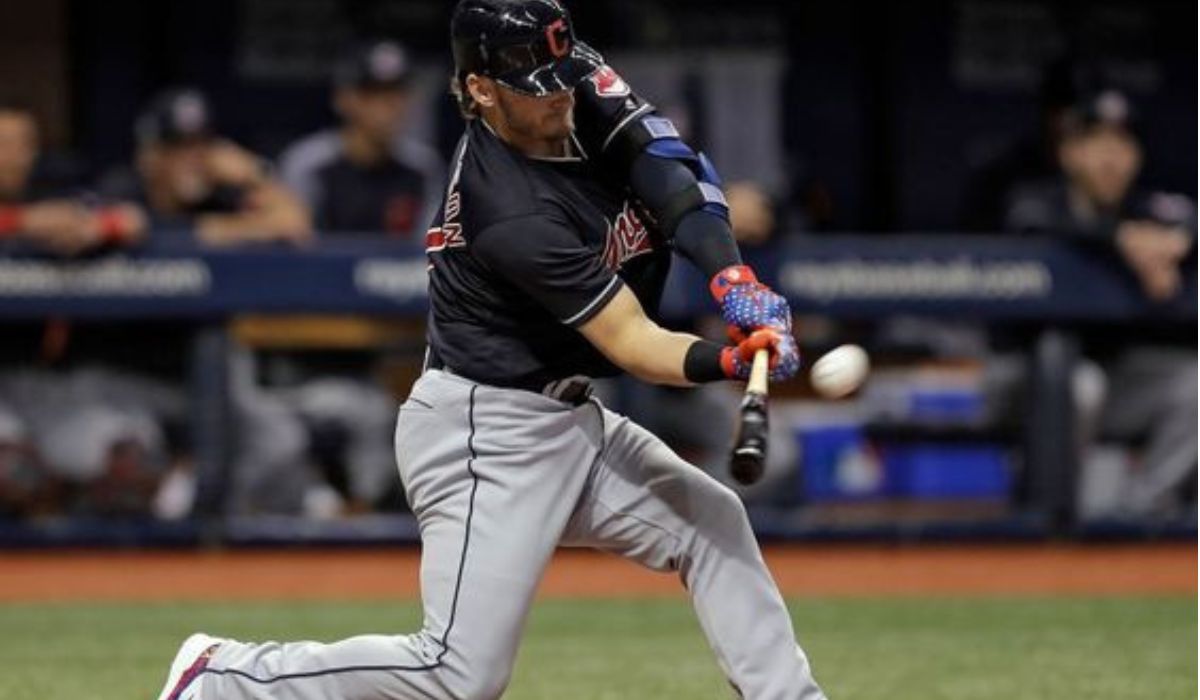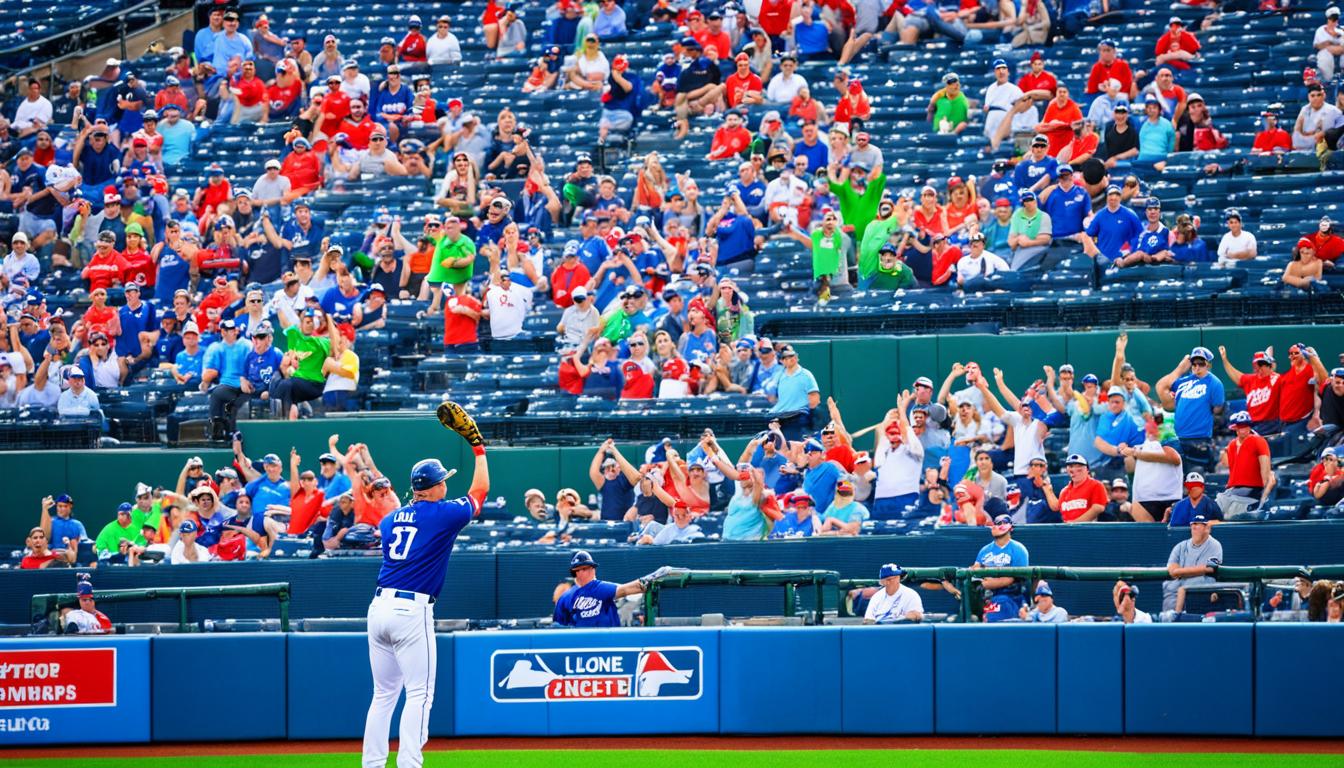
Image Credit-Pinterest
Baseball, a sport known for its thrilling moments and intense competition, is also a game that can surprise fans with its rare occurrences. One such rarity is the tie game in baseball. While tie games are more common in other sports like soccer and football, they are a rare sight in the world of baseball.
Imagine this scenario: it’s a sunny afternoon, and you’re sitting in the stands, eagerly cheering on your favorite team. The game has been a nail-biter from the start, with both teams battling neck and neck. As the innings progress, tensions rise and excitement fills the air. Every swing of the bat and every pitch brings the game closer to its thrilling conclusion.
But suddenly, the unexpected happens. The game is tied. Both teams have battled fiercely, but after nine innings, they find themselves on equal footing. The stadium buzzes with anticipation as the spectators wonder what will happen next. Can you tie in baseball? The answer is yes, and what ensues is a rare and fascinating occurrence that leaves fans with a mix of excitement and curiosity.
In the early days of baseball, tie games were more common. Often, games would end in a tie due to darkness, rain, or time constraints. But as the sport evolved, tie games became less frequent. The introduction of artificial lights, improved drainage systems, and the suspended game rule helped ensure that games could continue until a definitive result was reached.
In this article, we will dive into the world of tie games in baseball. We will explore their history, how they are handled today, and their impact on player records and statistics. So, if you’ve ever wondered about tie games in baseball or simply want to expand your knowledge of the game, read on to discover the answers.
Key Takeaways:
- Tie games in baseball are rare occurrences, but they can happen
- In the past, tie games were more common due to various factors
- The introduction of artificial lights and improved drainage systems reduced the occurrence of tie games
- If a game is tied and cannot be completed, it is considered a suspended game
- Tie games can have an impact on player records and statistics
The Evolution of Tie Games in Baseball
In the early days of baseball, tie games were a common occurrence. If a game ended with a tie score, it would be considered a tie or nothing at all, depending on the circumstances. As the game evolved, tie games became less common due to improvements in lighting technology, travel logistics, and field drainage.
The concept of the suspended game was introduced to allow for games to be completed at a later date if they were interrupted by curfew, time limits, or other factors. This rule was later expanded to include games that were tied when halted due to inclement weather. The goal was to avoid tie-breaking games and ensure a definitive result.
How Tie Games Are Handled Today
In modern baseball, tie games are generally not replayed unless the game has playoff implications or affects the final standings. If a game is stopped due to rain or other factors and is tied after at least five innings of play, it is considered a suspended game.
The game will be completed at a later date, usually during the next scheduled game between the two teams. If the two teams are not scheduled to meet again that season and the game will not impact the final standings, the game will be declared a tie.
Tie games are not counted in the standings but still count towards individual player statistics. This means that any home runs, strikeouts, or other individual accomplishments during a tie game will still be added to a player’s career statistics, contributing to their overall record.
Replaying tie games is kept to a minimum in order to maintain the integrity of the standings and prevent scheduling conflicts. By not replaying most tie games, teams can continue their regular season without disruptions and focus on new matchups and challenges.
In the rare instances where tie games are replayed, they often create excitement and intrigue for fans. It allows for a second chance to determine a winner and can have a significant impact on the outcome of the season.
Tie games may be rare in modern baseball, but they hold their own place in the history and tradition of the game. They represent a moment when teams were evenly matched, and neither side could secure a victory. While tie games no longer affect the standings, they still have an impact on individual player records and provide memorable moments for fans.
Overall, tie games in baseball are handled in a way that prioritizes fairness and ensures a definitive outcome whenever possible. Whether suspended or declared a tie, these unique occurrences add depth to the sport and contribute to its rich history.
Tie Games in Other Sports
Tie games are not unique to baseball. In fact, they occur in various other sports as well, such as the National Football League (NFL) and soccer. However, the way tie games are handled and factored into the standings differs across sports.
In the NFL, tie games are relatively rare but still count in the standings. When a game ends in a tie, both teams are awarded half a win and half a loss. This ensures that tie games have an impact on the overall standings, albeit to a lesser extent than a win or a loss.
On the other hand, tie games are more frequent in soccer, especially in leagues that follow the point system. In soccer, teams are awarded points based on the outcome of the game. A win earns a team 3 points, a tie (or draw) earns them 1 point, and a loss results in 0 points. This system acknowledges tie games as a valid outcome and presents teams with an opportunity to secure points even if they don’t win the game.
In summary, tie games are a part of many sports, including football and soccer, and they are factored into the standings differently in each sport. While tie games in the NFL contribute to half a win and half a loss, tie games in soccer earn teams a single point. These rules and tiebreakers vary across different sports and leagues.
The Impact of Tie Games in Sports
Tie games can have significant implications for teams and their standings in a sports league. Not only do they impact points and win-loss records, but tie games can also affect tiebreakers and playoff scenarios. In some cases, tiebreakers such as head-to-head records, point differentials, or even a coin toss may come into play to determine a team’s placement or qualification for the playoffs.
While tie games may not produce a clear-cut winner, they contribute to the competitiveness and unpredictability of different sports. They add an element of suspense and excitement, as fans are left wondering about the final outcomes and how they might influence a team’s chances for success.
Overall, tie games, although not as common as wins or losses, play a significant role in sports and contribute to the intricacies and complexities that make each game unique.
The Impact of Tie Games on Records and Stats
Tie games in baseball have a unique impact on player records and statistics. When a game is tied and then replayed at a later date, any individual accomplishments from the original game, such as home runs or strikeouts, still count towards a player’s career statistics. This means that a player could technically play more than the standard 162 games in a season if tie games occur and are replayed.
Player records and achievements in tie games contribute to the rich history of baseball. Throughout the years, there have been notable tie games in prestigious events like the World Series and All-Star Games. These tie games often become memorable moments, showcasing the talent and competitive nature of the sport.
“Tie games in baseball create unique opportunities for players to make their mark in the record books. It’s fascinating to see how tie games contribute to a player’s overall performance and legacy.” – Baseball Historian
Whether it’s a stellar pitching performance or a clutch hit, tie games provide players with the chance to solidify their place in baseball history. These games not only shape individual records but also become part of the collective narrative of the sport, adding layers of excitement and intrigue to the game’s story.
Notable Tie Games in Baseball History
- 1922 World Series: Game 2 between the New York Giants and the New York Yankees ended in a 3-3 tie after 10 innings due to darkness, resulting in the game being declared a tie.
- 2002 All-Star Game: This memorable game, held at Miller Park in Milwaukee, ended in a 7-7 tie after 11 innings. The tie prompted MLB to change the All-Star Game format to determine home-field advantage in the World Series.
- 1906 World Series: Game 1 between the Chicago Cubs and the Chicago White Sox ended in a 6-6 tie after 12 innings. Due to the lack of available dates to make up the game, it was deemed a tie and did not impact the series outcome.
Tie games in baseball are not just statistical occurrences; they are integral parts of the game’s history and narrative. They shape player records, contribute to memorable moments, and make each season’s story unique.
Conclusion
While tie games in baseball are rare, they can still occur under certain circumstances. The rules and handling of tie games have evolved over time, with the goal of avoiding ties and ensuring a definitive outcome.
Tie games are not counted in the standings but still have an impact on individual player statistics. If a game is replayed at a later date, any individual accomplishments in the original game, such as home runs or strikeouts, will still count towards a player’s career statistics.
Despite their rarity, tie games have a place in the history and lore of baseball. Notable tie games have occurred in World Series and All-Star Games, further cementing their significance. So, while tie games may not happen often, when they do, they add an intriguing element to the game, showcasing the unpredictable nature of baseball.
Source Links
- https://forum.officiating.com/baseball/10164-tie-goes-runner.html
- https://ordinary-times.com/2015/12/28/tie-games-in-baseball/
- https://img.mlbstatic.com/mlb-images/image/upload/mlb/atcjzj9j7wrgvsm8wnjq.pdf

Meet Daniel Anderson, the heart and soul behind Baseball Pro Picks. At 49, Daniel’s life has revolved around baseball, a passion that’s as strong today as it was when he first fell in love with the game. Living in the USA, Daniel has dedicated countless hours to watching, analyzing, and understanding every pitch, hit, and home run, making almost no game missed. His deep-rooted love for the sport is matched only by his commitment to sharing insightful, expert analysis with fellow baseball enthusiasts. With decades of experience and a keen eye for the game’s nuances, Daniel brings a unique perspective that enriches Baseball Pro Picks. Trust Daniel to guide you through the intricacies of baseball with the authority and trustworthiness of a true aficionado.


